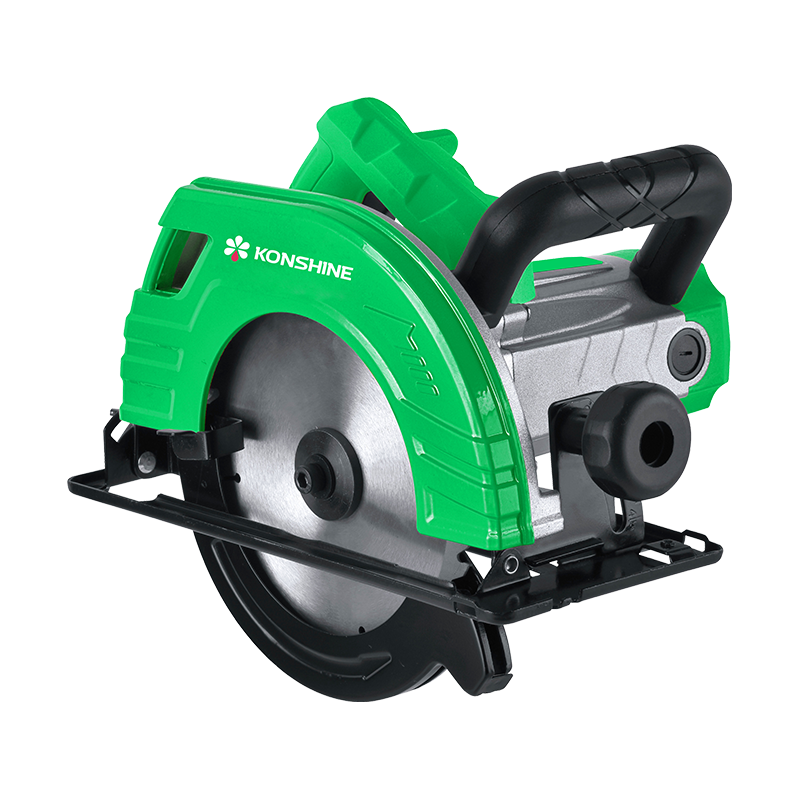The history of the circular saw can be traced back to the late 18th century when it was invented by Samuel Miller, an Englishman. However, it wasn't until the early 19th century that the circular saw began to gain widespread recognition and use. With innovations in design and manufacturing, circular saws became more efficient and versatile over time. Today, they come in various types and sizes, each tailored to specific cutting tasks.
2. Anatomy of a Circular Saw
A typical circular saw comprises several key components:
Circular Blade: The circular blade is the heart of the saw. It features sharp teeth designed for cutting through various materials, such as wood, metal, plastic, and masonry. Blades come in different sizes and tooth configurations, allowing for customization based on the intended application.
Motor: Circular saws are equipped with powerful motors that drive the rotation of the blade. The motor's size and power rating determine the saw's cutting capacity and performance.
Base Plate (Shoe): The base plate, also known as the shoe, provides stability and support for the saw as it glides over the material being cut. It typically features depth and bevel adjustment controls, allowing for precise cutting angles and depths.
Handle and Trigger: The handle is where the user grips the saw, while the trigger controls the saw's operation. Ergonomic handles and triggers enhance user comfort and control during cutting tasks.
Blade Guard: A blade guard is a safety feature that covers the exposed portion of the blade, retracting as the saw is lowered onto the material and returning to its protective position when the cut is complete.
3. Versatile Applications
Circular saws are renowned for their versatility, making them invaluable tools in various fields:
Construction: In construction, circular saws are used for framing, cutting plywood and lumber, and making precise cuts in various building materials.
Woodworking: Woodworkers rely on circular saws for cross-cutting, rip-cutting, and creating complex joinery. With the right blade, they can even cut curves.
Metalwork: Some circular saws are specifically designed for cutting metal. These saws use specialized blades to handle materials like steel and aluminum.
DIY Projects: Circular saws are popular among DIY enthusiasts for a wide range of projects, including home renovations, furniture building, and crafting.
4. Safety First
Safety should always be a top priority when using circular saws. Here are some essential safety tips to follow:
Wear Appropriate Safety Gear: Always wear safety goggles, hearing protection, and work gloves when operating a circular saw. If cutting materials that produce dust or debris, use a dust mask and appropriate clothing.
Secure the Workpiece: Ensure the material you're cutting is firmly secured to prevent unexpected movement. This prevents kickbacks and inaccurate cuts.
Check the Blade: Ensure the saw's blade is sharp, properly installed, and tightened securely. A dull or loose blade can be dangerous and lead to accidents.
Mind the Blade Guard: The blade guard should be in good working condition. It's a critical safety feature that prevents contact with the spinning blade.
Proper Cutting Technique: Maintain a firm grip on the saw, position yourself correctly, and follow the manufacturer's recommendations for the type of cut you're making.
5. Maintenance and Care
To keep your circular saw in optimal condition, perform regular maintenance. This includes cleaning the saw, checking for loose parts, and lubricating moving components. Keep the blade sharp by sharpening or replacing it as needed, and store the saw in a dry and secure place to prevent damage and corrosion.


 英语
英语 越南语
越南语 西班牙语
西班牙语













